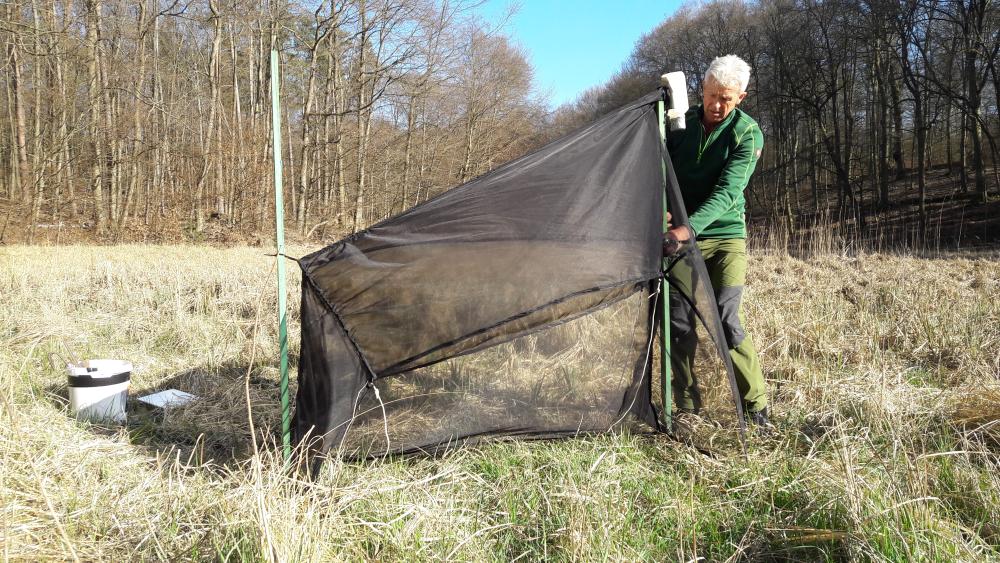
A so-called Malaise trap for insects is installed in Neuglobsow by Michael Sachtleben as part of the study. | Photo: IGB
With more than 1 million described species worldwide, insects are by far the largest and most diverse taxonomic group in the animal kingdom. Given the high species diversity and increasing requirements for ever more comprehensive data, traditional microscopic approaches cannot keep pace with the number of samples to be analyzed. "In view of dramatic rates of global insect extinctions, new approaches are needed that complement the traditional microscopic identification. “By being more comprehensive and faster, such complementary methods need to ensure both efficient and reliable assessments of insect biodiversity and distribution”, said Professor Mark Gessner, department head at IGB and co-author of the study.
DNA metabarcoding is a promising approach to reach this goal, enabling the identification of species in a composite sample of thousands of individuals. The team, led by the University of Duisburg-Essen and the Senckenberg Gesellschaft für Naturforschung, has now shown how DNA metabarcoding can be integrated into large-scale insect monitoring. Based on the analysis of 1,815 samples from 75 Malaise traps set up across Germany in 2019 and 2020, the current study presents both highly reproducible and efficient laboratory workflows and bioinformatic data analyses. Estimates of the time and costs involved in the analyses are also provided.
Recording the biodiversity of ‘dark’ taxa
A total of 10,800 taxonomically validated insect species were identified. Add to this number almost twice as many other species that were also contained in the samples, specifically an estimated further 21,000 plausible species, which either lack a reference barcode or are undescribed to date. DNA metabarcoding can therefore also help to identify unknown species. “That said, we need to distinguish between so-called dark taxa, which are species that have not yet been scientifically classified, and species that have been formally described but lack genetic reference barcodes”, explained IGB researcher Professor Michael Monaghan, a co-author of the study.
Approach well suited for insects with an aquatic life-history stage
An important detail for the IGB researchers was that the Malaise traps were also effective at catching insects with an aquatic life-history stage, even though the traps were devised for other insect groups and were rarely placed near water bodies. Identification using DNA metabarcoding also proved effective for these insects. Approximately 150 caddisfly (Trichoptera), 50 stonefly (Plecoptera) and 40 mayfly species (Ephemeroptera) were caught in the Malaise traps. As much as 80 per cent of the caddisfly species could be genetically identified. That is a higher percentage than for any other insect group included in the study.







